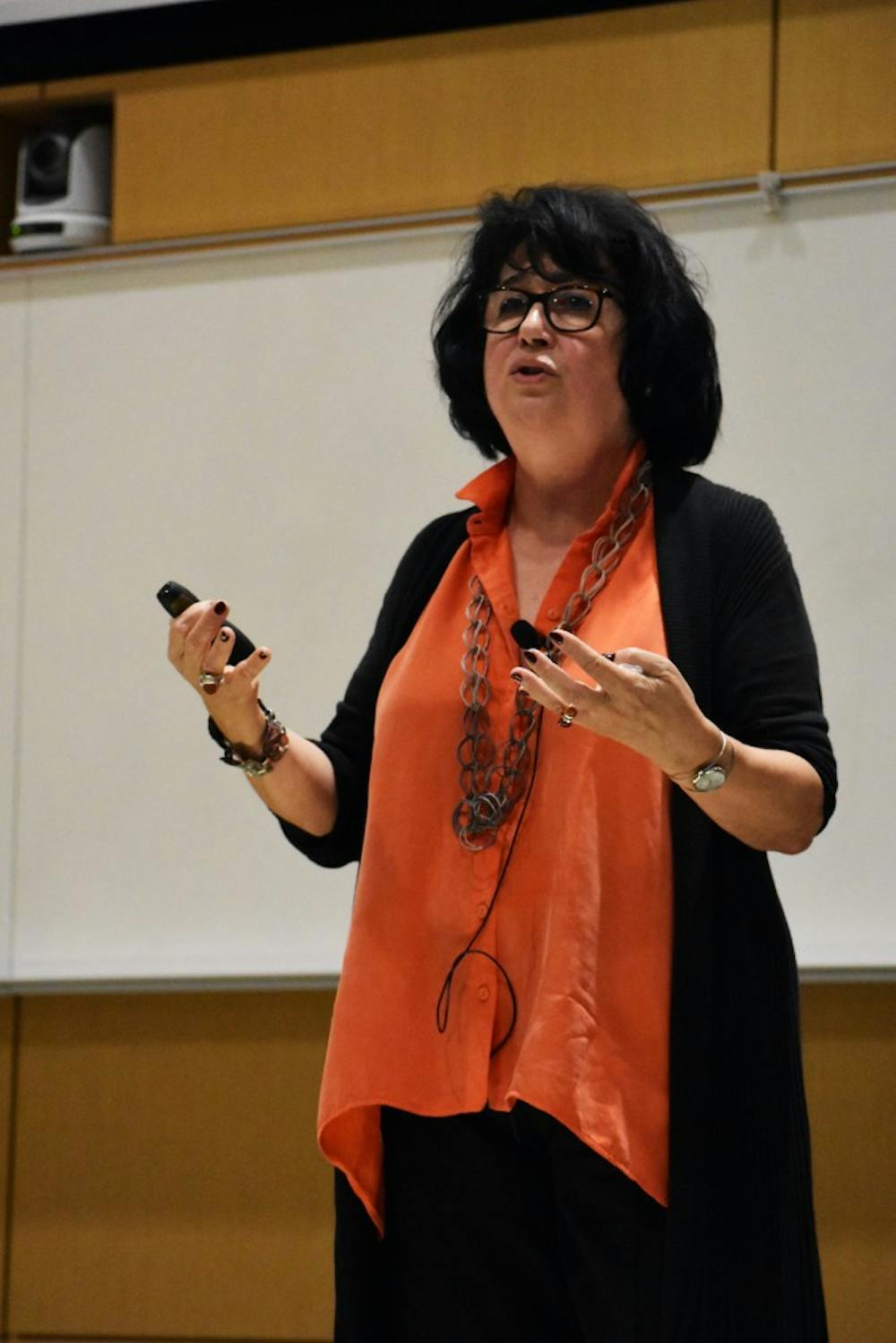University of Haifa professor Sfard lectures on strategies to teach mathematics
Anna Sfard gave two lectures on mathematics education Oct. 1 - 2

University of Haifa professor Anna Sfard gives a lecture on the impact language has on mathematics on Oct. 1 at the Bioscience Building.
University of Haifa math education professor Anna Sfard discussed different aspects of mathematics in two lectures over two days for the 7th annual Fleming Lecture Series.
Her first lecture was Oct. 1 in Bioscience Building Room 1010. Her second was a day later, Oct. 2 in Pearce Hall room 127.
Part I: Mathematics Learning: Does Language Make a Difference?
Sfard can speak Polish, Hebrew, and English, but the language she’s most interested in is math.
“When you look at what people say about mathematics you find things like: ‘mathematics is the language of nature. It is the only true universal language. [Mathematics] springs from the soil of basic human experience,'” Sfard said. Sfard doesn't entirely agree. She sees math as a multicultural language, rather than a universal language.
One story supporting Sfard’s claim comes from a student of hers. This student, Noah Morris, was teaching mathematics and statistics at the University of Tonga. Morris realized many of the Tongan students struggled with two mathematical concepts: probability and fractions.
After further inspection of the Tongan language, Morris discovered the original Tongan language had almost no vocabulary for talking about parts of things and for uncertainty. The creation of new Tongan words to describe fractions and probability had no associations.
“When the mathematical discourse came, it was alone. There was nothing to connect to, so nothing to build this discourse on,” Sfard said. “For Tongan culture, many things are dealt with in integers only. Never fractions."
She believes the issue of language discourse in mathematics could possibly be solved by considering the culture and lifestyle of a community when creating problems.
Holland freshman Isabella Correa attended the lecture out of curiosity after her professor spoke about it during class. Correa is interested in majoring in biochemistry and believes math and science go hand-in-hand.
“I thought the lecture was interesting. I liked how she gave evidence and a clear definition of mathematical communication,” Correa said.
For Correa, developing a new, universal language for mathematics wouldn’t solve the problem of language barriers in mathematical discourse. “I don’t think changing a language would affect [mathematical learning] at all, I think it’s their culture,” she said.
Part II: What is Mathematics and Why Does it Matter?
In Sfard’s second lecture, she looked at the history of mathematics, a spectrum of definitions from various mathematicians, and the relationship between mathematical signs and mathematical objects.
She also illustrated why mathematics is vital in helping us search for the unknown and enhance existing practices and ideas.
"You are using special tools, like mathematical signs, to tell a story,” she said. In addition to each problem being a story, each story has multiple ways it can be translated.
Mathematical signs usually include numbers and symbols, while mathematical objects are used to represent a concept existing in the world that we can or cannot see. Although these two concepts are separate, they work together to tell stories.
Sfard said learning difficulties could be due in part to students not properly constructing and participating with different mathematical concepts. “Most commonly, the issue is students are not able to place objects into problems,” Sfard said.
Grand Blank junior Alayna Oskey agreed with Sfard’s claim, and has experienced some of these learning difficulties herself. “Sometimes I go home thinking I know what the professor was talking about, only to realize I didn’t, Oskey said.
What resonated with Oskey was the concept of professors taking more of mathematical object approach to problems while teaching. “It’s explaining more of what’s actually happening in the problem, rather than just showing a bunch of symbols and running through the processing,” she said.



